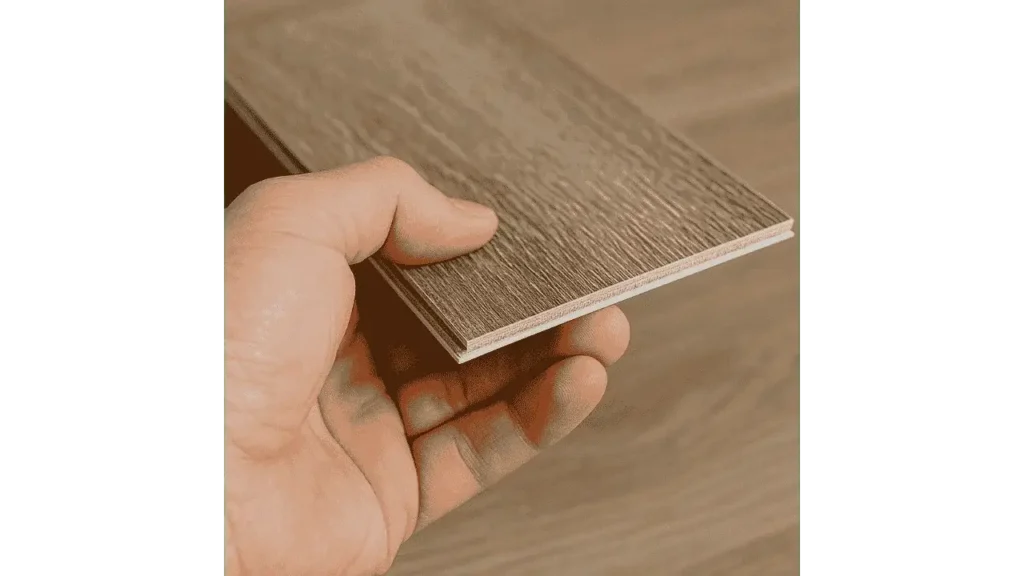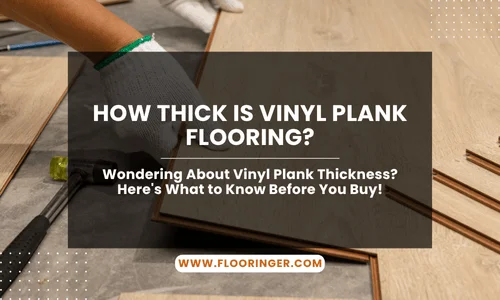When I was first renovating my basement, the question of vinyl plank thickness completely threw me off. It seemed simple, but once I looked into all the different options and their purposes, I realized how much it affects comfort, stability, and even insulation. So, how thick is vinyl plank flooring supposed to be? The answer isn’t one-size-fits-all. The thickness varies depending on where you plan to install it, what kind of traffic the area gets, and whether you need better noise control or comfort underfoot. Once you understand how thickness relates to durability and performance, the choice becomes much clearer.

Types of Vinyl Plank Flooring
SPC vs WPC Luxury Vinyl Products
Stone Plastic Composite (SPC) and Wood Plastic Composite (WPC) represent two of the most commonly used luxury vinyl plank types today. SPC has a rigid core made with limestone powder, making it denser and ideal for high-traffic and moisture-prone areas like kitchens and bathrooms. I used SPC in my entryway, and it has held up wonderfully to muddy boots and wet umbrellas. WPC, on the other hand, is softer and more forgiving underfoot due to its wood pulp and plastic core, making it more comfortable for bedrooms or family rooms where you’re often barefoot or standing for long periods. Choosing between these two comes down to whether you prioritize toughness or underfoot softness.
Learn More: How to Install Vinyl Plank Flooring On Stairs in 6 Steps?
LVP and LVT Floors & Their Layers
Luxury Vinyl Plank (LVP) and Luxury Vinyl Tile (LVT) consist of several layers that influence their durability and feel. These include a protective wear layer, a decorative printed design layer, a solid core layer, and a backing layer for stability. Each layer plays a role in performance. The core provides structure, while the top layer protects against scuffs and scratches. Thicker versions of these floors usually include enhanced backing and noise-dampening qualities, which I found really helpful when installing LVP in a second-floor hallway.
Vinyl Floor Thickness, Wear Layer, and Quality Specs
The total thickness of vinyl planks usually ranges from 2mm to 8mm, but what matters more is how that thickness contributes to real-world use. The wear layer, which is usually between 6 and 20 mils thick, offers crucial protection.
Flooring expert Brian Peters explains,
“Thicker doesn’t always mean better, but a higher wear layer generally indicates longer-lasting protection, especially in high-traffic areas.”
This insight guided me to select a 20 mil wear layer in my kitchen renovation, and three years in, the surface still looks flawless despite daily foot traffic.
Homeowners should be careful not to confuse overall plank thickness with wear layer thickness. Some thinner planks offer excellent surface protection if they come with a durable wear layer, while others may feel soft or wear down faster despite their size.
Read More: What Rug Backing Is Safe for Vinyl Plank Flooring?
Interpreting Wear Layer Ratings
Instead of memorizing mil figures, think of wear layers in terms of usage. A 6 to 8 mil wear layer is acceptable for light residential use like bedrooms or guest rooms. If your space sees more action, like living rooms or hallways, opt for a 12 to 20 mil wear layer. And if you’re dealing with pets or children, going even thicker ensures long-term protection. Commercial areas often need 20 mil or higher to withstand constant wear. These thresholds help match performance to environment without overspending.
Installation Methods for Thicker Vinyl Flooring
Click Lock Method
The click lock or floating floor system is especially popular with DIYers. Thicker planks, particularly those between 4mm and 6mm, snap together more easily and feel more secure underfoot. I’ve used this method in a basement recreation room, and the floating nature made it easy to install while accommodating small subfloor imperfections. It’s also a good choice if you plan to replace flooring in the future without major demo work.
Glue-down Method
Glue-down installation is best suited for thinner planks or commercial-grade flooring. It creates a strong bond between the vinyl and the subfloor, making it less prone to movement. I used this technique for a home office where heavy furniture needed maximum stability. This method is more labor-intensive but pays off with a seamless, firm finish that won’t shift over time.
Choosing the Right Thickness for LVP and LVT
What is the Standard Thickness of a Luxury Vinyl Plank?
Most luxury vinyl planks range from 2mm to 8mm thick. For most residential spaces, a 4mm to 6mm thickness works well, offering comfort, insulation, and sufficient wear resistance. If your subfloor is uneven, thicker planks will better hide imperfections and feel more forgiving underfoot.
Flooring contractor Melanie Ross offers a practical benchmark:
“For families with pets or kids, I always recommend at least 5mm thickness and a 12 mil wear layer. It balances comfort with durability.”
This balance matters especially in rooms where foot traffic and playtime coincide. A thicker product doesn’t just provide padding, it also reduces sound, making upstairs areas noticeably quieter.
Conclusion
Vinyl plank thickness affects everything from how your floors feel to how long they last. Rather than looking for the thickest option available, match the product to your needs: higher wear layers for durability, SPC for strength, WPC for comfort. Consider installation methods and room type to make the best choice. Whether you’re outfitting a quiet bedroom or a busy kitchen, the right thickness ensures your floors look and feel right, without constant upkeep or early replacements.
